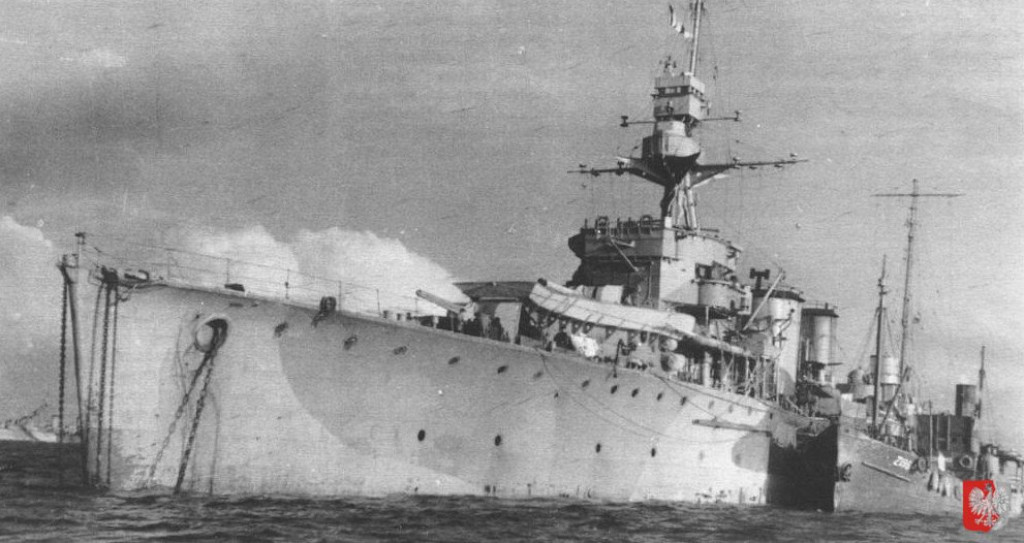Able-bodied Seaman Edward NikielEdward Józef Nikiel, from Wołyn in Eastern Poland, was arrested by the NKVD after the Soviet invasion and deported to a gulag in Vorkhuta. He was released in 1941 with the Polish Army in the East to Persia. He enlisted in the Polish Navy and survived the sinking of Dragon during the D-Day landings.ORP Dragon sinks in the D-Day landingsORP Dragon was an ancient light cruiser and she had, when new, served under Admiral Cowan in the Baltic Sea against the Bolsheviks in 1919-20. It had been intended to convert vessels of this ‘Danae’ class into anti-aircraft cruisers but this was never fully achieved. Dragon was little altered, except for the loss of a six-inch gun for some increased AA armament.On ‘D-Day’ her target was a German gun battery at Calleville-sur-Orne behind Sword beach. According to records the Polish gunners destroyed the battery in 49 minutes. On the 7th June they bombarded a battery at Trouville and then fortifications at Caen. Dragon then hit and destroyed about 25 German tanks near Varaville, courtesy of accurate shore based observation. In all, between 12th and 18th June Dragon fired 1,297 shells in support of the British and Canadian bridgehead breakout. According to Wadjek Kocaba, who served on the Dragon, the noise of the constant bombardment of shore positions, interspersed with trips across the Channel to refuel, rearm and to land wounded soldiers, was the order of the day.
In the early hours of 8th July, whilst approaching a position inshore to give artillery support north of Caen, Dragon was struc, by a Marder ‘human’ torpedo, guided home by a German naval cadet. The torpedo exploded on the port side, between the funnels, and set off the magazine of Q gun. Wadjek was thrown 100 yards clear of the ship by the blast and spent some hours in the water before being rescued. According to Tadeusz Lesisz, an officer on board, exploding munitions ripped open the second engine room, destroying watertight bulkheads and oil tanks. Number 4 gun crew were drowning; engines and electrical power failed. Despite frenzied pumping the cruiser began to settle. She was dragged by a corvette and tugged to the British Arromanches artificial ‘Mulberry’ harbour B. Here she was allowed to settle as part of a line of sunken blockships scuttled parallel to the coast making up a ‘Gooseberry’ breakwater, which protected the small landing craft. Although most of the ship’s company of some 500 survived, one officer and 37 seamen were to eventually to die. Kocaba, severely shaken by his experience, was sent to Brighton to help nurse the badly injured.
From Poles Apart: Polish Naval Memories of World War Two by Martin Hazell

















